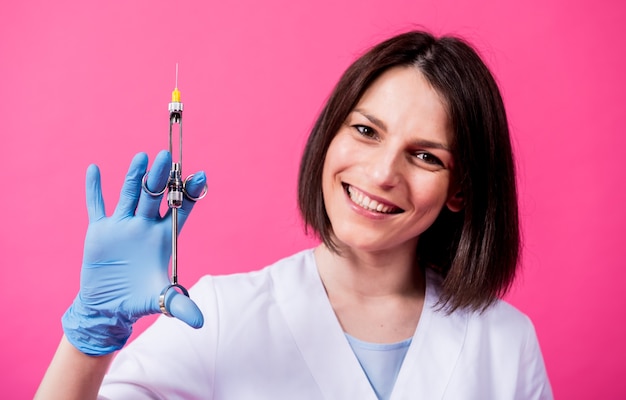Botox has become a household name in cosmetic procedures, known for its effectiveness in reducing the appearance of fine lines and wrinkles. As the popularity of Botox continues to rise, many individuals are eager to understand its success rates. What does the scientific literature reveal about the effectiveness of Botox treatments? In this article, we will delve into the studies surrounding Botox in Dubai success rates, exploring various factors that contribute to its effectiveness and examining the results obtained in clinical trials.
Understanding Botox Mechanism
Before discussing the success rates, it’s crucial to understand how Botox works. Botox is a purified form of botulinum toxin type A, which temporarily paralyzes specific muscles in the face. By blocking nerve signals, Botox prevents the targeted muscles from contracting, resulting in a smoother appearance of the overlying skin. This mechanism is what contributes to the reduction of dynamic wrinkles, such as crow’s feet and frown lines.
The Success Rates of Botox Treatments
Research consistently demonstrates high success rates for Botox treatments, particularly for facial aesthetics. A comprehensive study published in Dermatologic Surgery examined the effectiveness of Botox for various cosmetic indications, including glabellar lines (frown lines), forehead lines, and crow’s feet. The results indicated that approximately 80% of patients reported significant improvements in the appearance of their wrinkles after treatment. This suggests that Botox is a highly effective option for individuals seeking a non-surgical solution to facial aging.
Moreover, a systematic review published in the Journal of Cosmetic Dermatology analyzed multiple studies on Botox effectiveness. The review found that Botox treatments yielded a high degree of satisfaction among patients, with approximately 90% of participants reporting satisfaction with their results. This high satisfaction rate highlights the reliability of Botox as a preferred cosmetic procedure.
Factors Influencing Success Rates
While the overall success rates of Botox treatments are impressive, various factors can influence individual outcomes. One critical factor is the skill and experience of the injector. Studies indicate that outcomes are often better when Botox is administered by a qualified and experienced medical professional. A well-trained injector understands facial anatomy and the precise techniques needed to achieve optimal results, reducing the likelihood of complications and ensuring a more natural appearance.
Another factor is the individual’s unique anatomy. Variations in facial structure, skin thickness, and muscle activity can affect how Botox interacts with the targeted muscles. Some individuals may respond more favorably to treatment than others, leading to varying success rates across different patients. A study published in the Aesthetic Surgery Journal emphasized the importance of individualized treatment plans tailored to each patient’s unique needs for maximizing Botox’s effectiveness.
Duration of Effects
Another aspect of Botox success rates relates to the duration of effects. While Botox is not a permanent solution, its effects typically last between three to six months. Research has shown that repeated treatments can lead to longer-lasting results over time, as muscles may become conditioned to relax, leading to improved outcomes. A study conducted by the American Society for Aesthetic Plastic Surgery found that patients who received consistent Botox treatments reported prolonged effects and greater satisfaction compared to those who underwent treatment sporadically.
The Role of Maintenance Treatments
For individuals seeking sustained results, maintenance treatments play a crucial role in achieving ongoing satisfaction with Botox. Regular follow-up appointments can help maintain the desired aesthetic effects and prevent the re-emergence of wrinkles. Studies have shown that patients who adhere to a consistent maintenance schedule experience better long-term success rates and improved overall satisfaction with their appearance.
Clinical Trials and Long-Term Studies
Clinical trials have played a significant role in establishing the safety and efficacy of Botox treatments. For instance, a landmark study published in the Archives of Dermatology demonstrated the long-term effectiveness of Botox in treating facial wrinkles over a two-year period. The study found that patients who received regular Botox injections maintained a significant reduction in wrinkle severity compared to a control group that did not receive treatment. This longitudinal data provides compelling evidence for the sustained effectiveness of Botox in cosmetic applications.
Additionally, a meta-analysis published in Plastic and Reconstructive Surgery examined the efficacy of Botox for treating various medical conditions, including migraines, excessive sweating, and muscle spasms. The analysis revealed that Botox treatments achieved success rates ranging from 70% to 90% across different conditions, underscoring its versatility as a therapeutic agent beyond cosmetic applications.
Conclusion
In summary, the studies surrounding Botox success rates paint a promising picture for individuals considering this popular cosmetic treatment. Research consistently indicates high levels of satisfaction and effectiveness in reducing the appearance of wrinkles, with success rates reaching as high as 90% in some studies. Factors such as the injector’s experience, individual anatomy, and maintenance treatments significantly influence outcomes, highlighting the importance of personalized care. As Botox continues to be a favored option for those seeking non-surgical solutions for aging, ongoing research and clinical trials will further enhance our understanding of its effectiveness and application in various contexts.
This post was created with our nice and easy submission form. Create your post!





